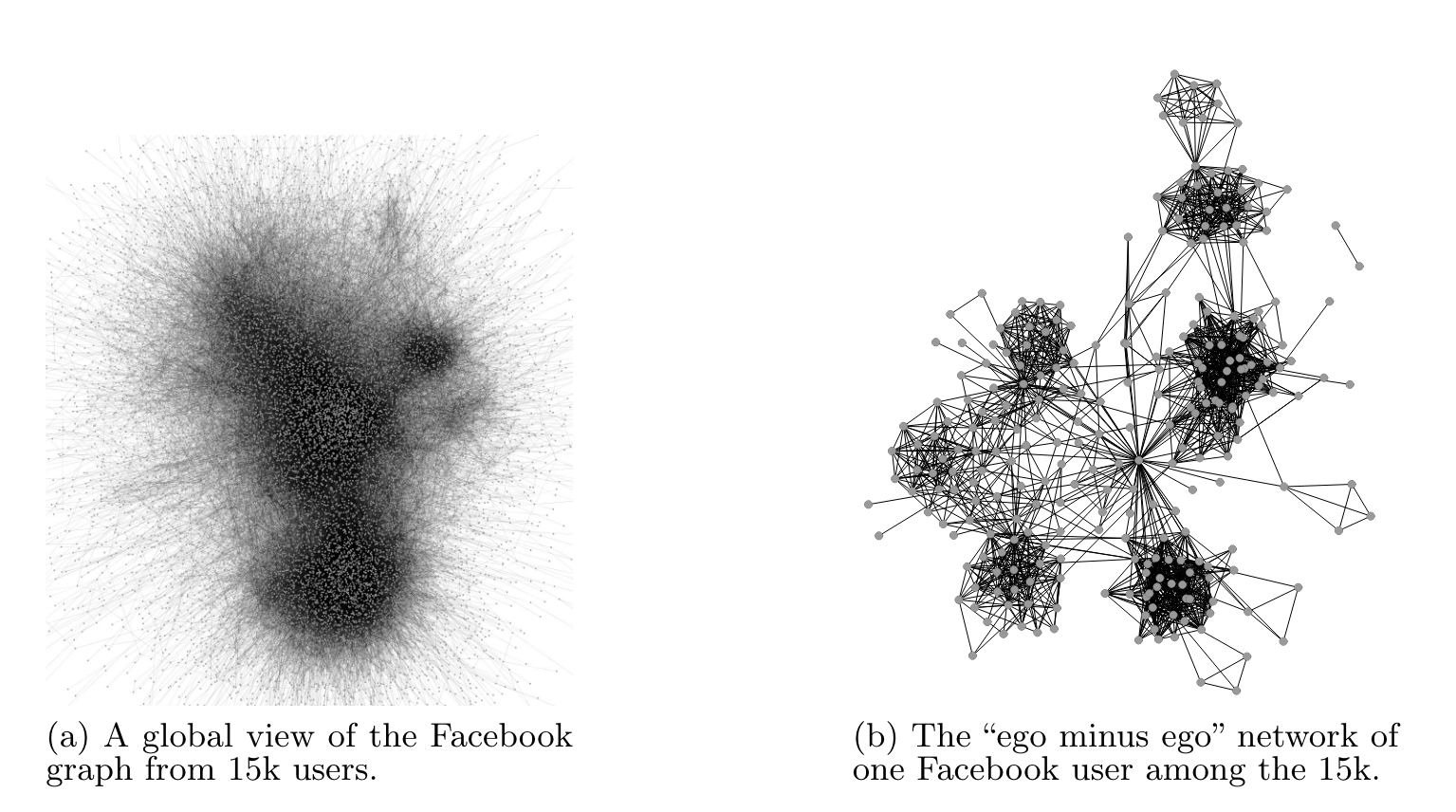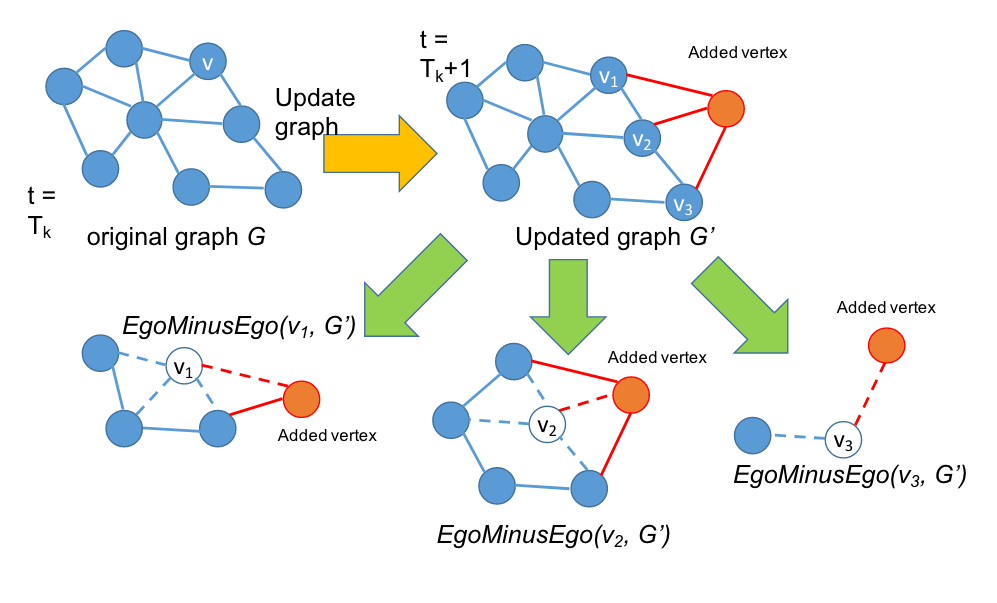The Ego Network in which the ego node has been removed, together with all its attached edges.

Figure 1: The real world example of the “local vs global” structure intuition.
Suddenly, everything around the ego makes sense and some groups can be easily spotted. These groups correspond to the high school and university friends, mates from different workplaces and the members of an online community (we know all these details because the chosen ego is one of the authors of this paper).
The ego is part of all these communities and knows that particular subsets of its neighborhood are part of these communities too. Probably, different egos have different perspectives over the same neighbors and it is the union of all these perspectives that creates an optimal partition of the network. In other words: if node A and node B are considered in the same communities by all the nodes connected to both A and B, then they should be grouped in the same community. This is achieved by a democratic bottom-up mining approach: in turn, each node gives the perspective of the communities surrounding it and then all the different perspectives are merged together in an overlapping structure.
~
COSCIA, Michele, ROSSETTI, Giulio, GIANNOTTI, Fosca and PEDRESCHI, Dino, 2012. DEMON: a local-first discovery method for overlapping communities. In: Proceedings of the 18th ACM SIGKDD international conference on Knowledge discovery and data mining. Beijing China: ACM. 12 August 2012. p. 615–623. ISBN 978-1-4503-1462-6. DOI 10.1145/2339530.2339630. pdf ![]()

Figure 2. An Example of Incremental Ego Minus Ego (add single vertex and neighboring edges).
KANEZASHI, Hiroki and SUZUMURA, Toyotaro, 2016. An incremental local-first community detection method for dynamic graphs. In: 2016 IEEE International Conference on Big Data (Big Data). IEEE. 2016. p. 3318–3325. page ![]()